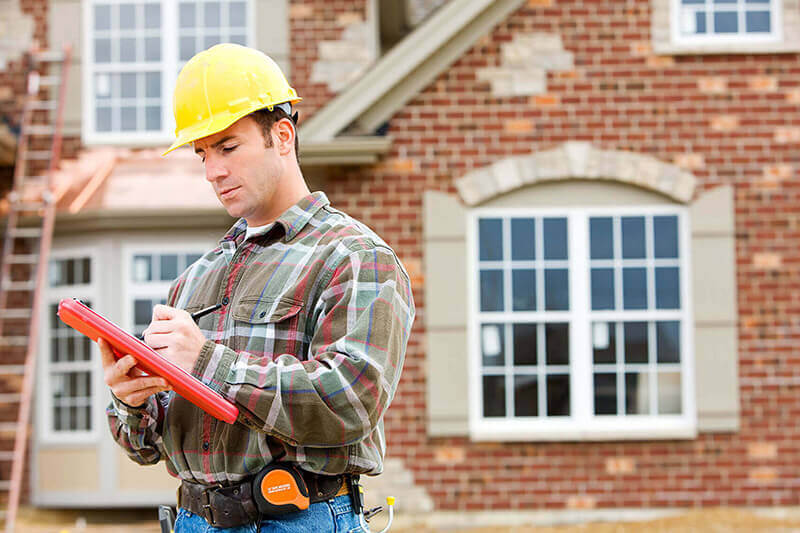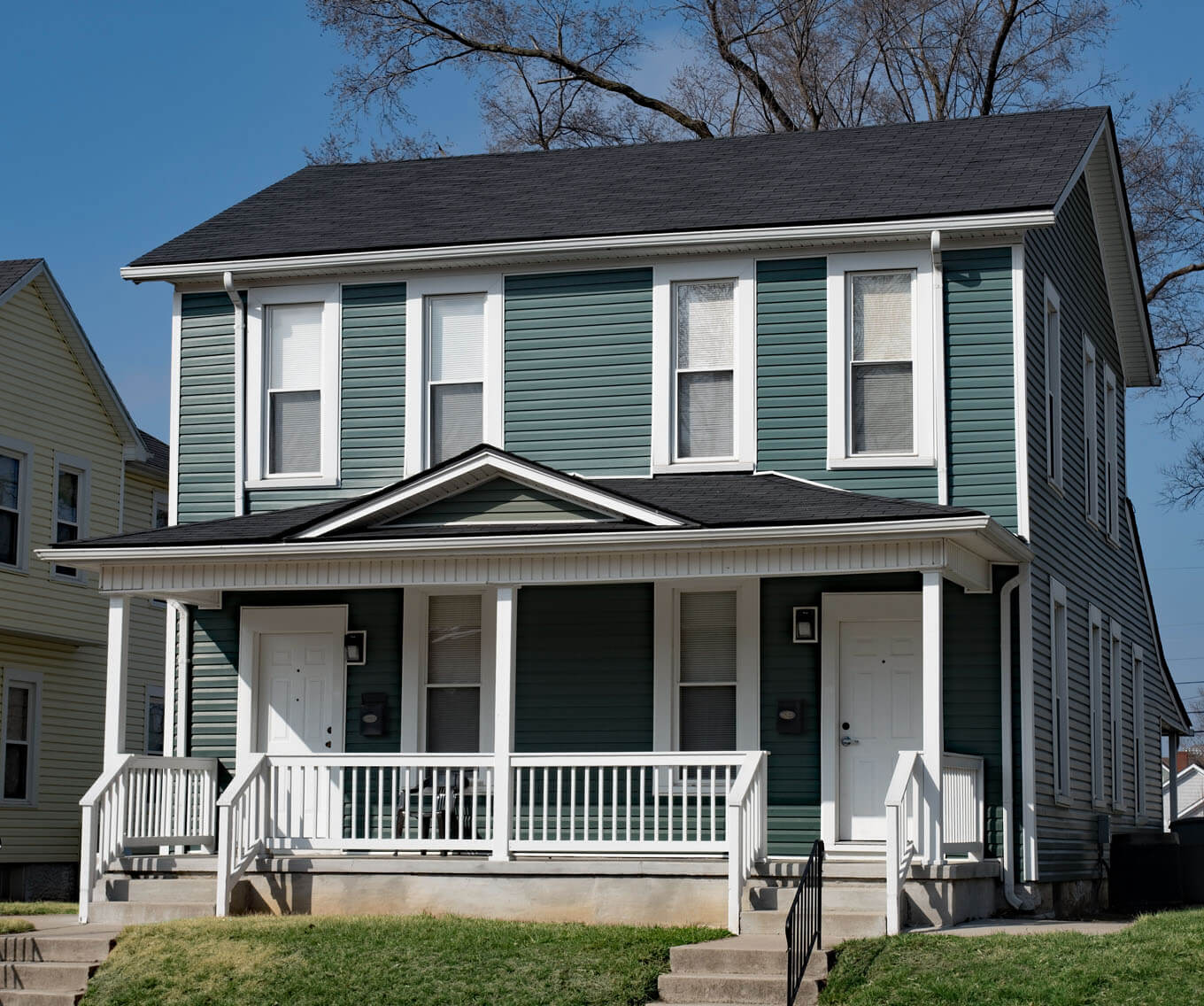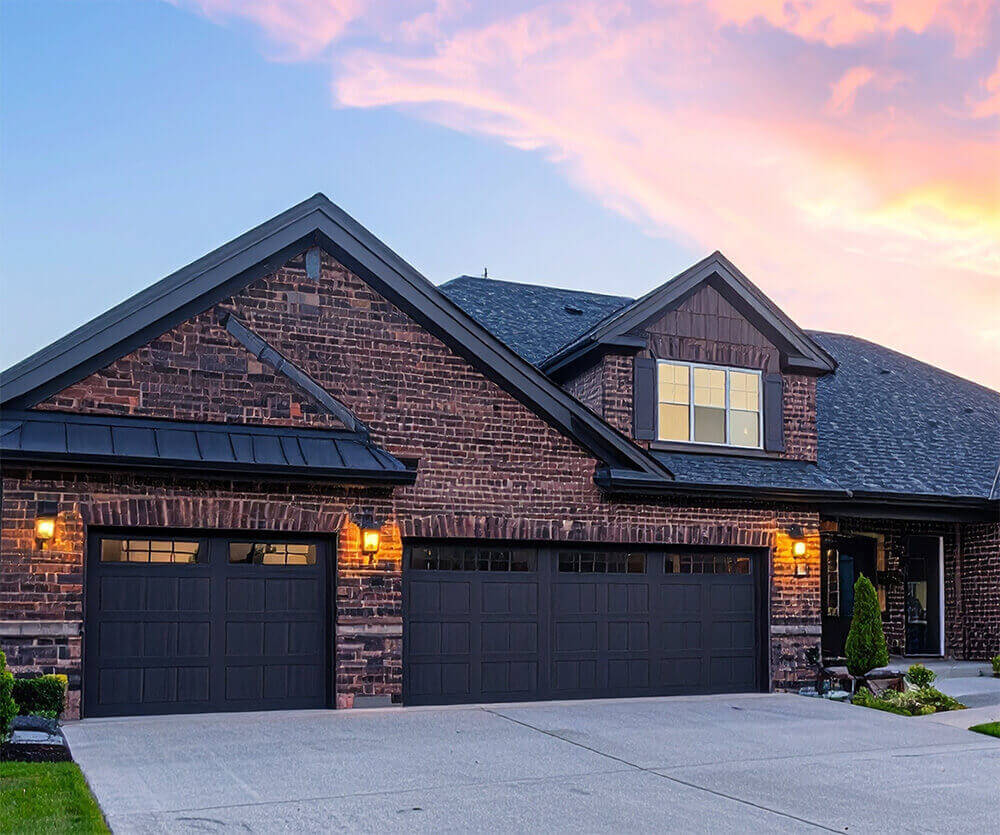What is a home inspection?
A home might look perfect on the outside. But underneath the fresh paint or new carpet, there could be problems — like a roof that needs replacing or plumbing that leaks. That’s where a home inspection comes in.
An inspection takes place after someone accepts an offer on a house, but before the closing. A professional home inspector checks all the major parts of the home and provides you with a home inspection report. This report outlines what’s in good shape and what might need work.
This is an important step that can help you avoid costly surprises after you move in.
How long does a home inspection take?
A full inspection typically takes two to four hours, depending on the size of the home.
The buyer isn’t required to be present during the inspection, but attending along with your real estate agent is a great idea. You can walk around with the inspector, ask questions and get a better feel for the home’s condition. Many buyers say it gives them peace of mind.
The homeowner can be home during a home inspection, but many choose to leave to give the inspector and buyer space. If the seller does stay, they should keep a low profile and make sure all areas of the home are accessible, with pets safely secured.
The home inspection report
After the inspection, you’ll get a home inspection report. This document lists everything the inspector found — both the good and the bad. It may feel like a long list, but don’t panic.
Most homes have some issues. Your real estate agent can help you figure out what issues are serious and what are minor. They can also advise you on whether to ask the seller to fix something.
Your home inspection checklist
An inspection checklist provides a detailed list of everything that someone should review during a home inspection. It includes both the inside and the outside of the home. Here’s what you can expect:
Exterior of the home
- Roof – Is it in good condition? Are there missing shingles or signs of leaks?
- Gutters and downspouts – Are they securely attached and draining properly?
- Siding and exterior paint – Any cracks, peeling or signs of water damage?
- Foundation – Are there visible cracks or signs of settling?
- Windows and doors – Do they open, close and lock properly?
Interior of the home
- Floors, walls and ceilings – Are they level? Any stains, cracks or uneven spots?
- Windows and doors – Do they seal properly and keep drafts out?
- Stairs and railings – Are they sturdy and safe?
- Smoke and carbon monoxide detectors – Are they installed and working?
Plumbing
- Faucets and showers – Do they run clear water and have good pressure?
- Drains – Do sinks, tubs and toilets drain quickly?
- Pipes – Any signs of leaks, corrosion or rust?
- Water heater – Is it the right size for the home, and does it work?
Electrical system
- Outlets and switches – Do they work and have proper covers?
- Breaker box – Is it up to code and labeled correctly?
- Light fixtures – Are they secure and working?
- GFCI outlets – Are there safety outlets in bathrooms, kitchens and outside?
Heating and cooling
- Furnace and air conditioner – Are they working and recently serviced?
- Air filters – Are they clean and replaced regularly?
- Ductwork – Are there any signs of leaks or damage?
Kitchen and appliances
- Oven, stove and microwave – Do they heat and function properly?
- Dishwasher – Does it run without leaks?
- Refrigerator – Is it clean and cooling well?
- Garbage disposal – Does it work without strange noises?
Attic and basement
- Insulation – Is there enough, and is it in good condition?
- Vents – Are they allowing airflow and preventing moisture?
- Signs of pests – Any droppings, damage or nests?
- Dampness – Any signs of water damage, leaks or mold?
What happens after the inspection?
Once you get the inspection report, you and your real estate agent can review it together. Depending on what it says, you have a few choices:
- Move forward with the sale as-is.
- Ask the seller to make repairs or give you credit to make them later.
- Walk away from the deal if the issues are too serious or costly.
Remember, the goal of the inspection isn’t to make sure the house is perfect but to help you make a smart choice. Many things on the inspection checklist are small fixes. But some may be red flags — like structural damage or mold — that deserve a second look.
How to find a home inspector
When finding a home inspector you want to work with someone who’s experienced, certified and trustworthy. Your real estate agent may suggest a few names, but you can also search on your own. Check online reviews or ask friends and family if they’ve worked with someone they liked.
When choosing an inspector, ask:
- Are you licensed and insured?
- How long have you been inspecting homes?
- What do you include in your inspection?
- Can I see a sample of your home inspection reporting?
How much does a home inspection cost?
The cost of a home inspection can range from $300 to $500. This can vary widely depending on the state, as well as the size, age and location of the property.
For example, inspections in urban or high-cost-of-living areas may be priced higher than those in more rural regions. Larger homes or older properties may also require more time and detail, increasing the overall cost.
Additional services — like radon testing, termite inspections or sewer scope evaluations — can add anywhere from $100 to $300 or more.
Who pays for the home inspection?
In most cases, the homebuyer pays for the home inspection as part of their due diligence during the home purchase process. Since the inspection is meant to protect the buyer by uncovering potential issues with the property, it makes sense that the buyer covers the cost.
However, in competitive markets or as part of negotiations, a seller may agree to pay for the inspection or provide a recent inspection report to speed up the process.
Regardless of who pays, it’s important that the buyer has confidence in the inspector and the report, as it can influence major decisions like requesting repairs, renegotiating the purchase price or walking away from the deal entirely.
What is a 4-point inspection?
You may come across the term “4-point inspection” when researching your home inspection. While a full home inspection offers a top-to-bottom look at the property, a 4-point inspection zeroes in on just four key areas: the roof, electrical, plumbing and HVAC systems.
These are the systems most likely to cause major insurance claims, which is why insurance companies often require a 4-point inspection — especially for homes that are more than 20 years old.
The purpose isn’t to help you decide whether to buy the home, but to help your insurer determine whether the home is insurable in its current condition. If you’re purchasing an older home, your insurance agent may ask for this inspection as part of the underwriting process.
4-point inspection vs. full home inspection
It’s important to understand that a 4-point inspection is not a replacement for a full home inspection. It’s shorter, cheaper and much more limited in scope. A full inspection is designed to give you, the buyer, a complete picture of the home’s condition — from the foundation to the roof, and everything in between.
A 4-point inspection won’t catch issues with the structure, appliances, windows, insulation or other critical areas that could impact your investment. If your insurer requires a 4-point inspection, think of it as an additional step — not an alternative. For peace of mind and a truly informed purchase, a full home inspection remains essential.
Tips to make the most of your home inspection
Getting a home inspection is a smart move — but how you approach it can make all the difference. These tips will help you feel confident, prepared and informed every step of the way.
1. Don’t skip the inspection
Even if the home looks picture-perfect, never skip the inspection. A fresh coat of paint and beautiful landscaping can hide serious issues underneath. An inspection gives you a professional’s eyes on the entire property — inside and out.
This is the chance to spot things that could cost thousands later, like roof damage, faulty wiring or hidden plumbing problems. Skipping this step might save time now but lead to regrets later.
2. Be present if possible
You’re not required to attend the inspection, but it’s a good idea if you can. Walking through the house with the inspector lets you ask questions in real time and get their expert opinion on what they’re seeing.
You’ll also gain a better understanding of how things work in the home. Make note of where the circuit breaker is, or how to shut off the water in an emergency. Plus, hearing explanations in person can be much easier to understand than reading them later in the inspection report.
3. Take your own notes
Even though you’ll receive a detailed inspection report, it’s helpful to jot down what you see and hear. Make note of any questions you want to follow up on, or things that concern you the most. This can help you feel more organized and prepared when you review the full report later with your real estate agent. It also gives you a chance to document things in your own words, which can be helpful for decision-making.
4. Think long-term
Not every item on the inspection checklist will be an immediate problem. But keep in mind — some issues might get worse over time. A small crack in the foundation or an aging furnace may not need fixing today, but could be expensive down the road.
Ask the inspector what’s urgent versus what’s something to budget for in the future. Knowing what might need work in the next few years can help you plan your finances and avoid unexpected repair costs after you move in.
5. Trust the process
Nerves are normal during a home inspection, especially if problems pop up. But remember: the inspection is there to protect you, not scare you. Every home — new or old — has something that needs attention.
Stay calm, ask questions, and rely on your real estate agent and home inspector to help you understand what matters most. Better to know the truth now than discover an issue when it’s too late to negotiate or back out.
Final Thoughts
Buying a home is exciting — and a little stressful. But having a solid home inspection checklist makes the journey smoother. With the right inspector and a clear home inspection report, you’ll feel more confident making one of the biggest decisions of your life.
From the roof to the basement, an inspection helps you know what you’re buying. And that peace of mind is priceless.
If you’re in the middle of the homebuying process and have questions about inspections or financing, we’re here to help. Let’s make sure your new home is everything you’re hoping for — and more.





